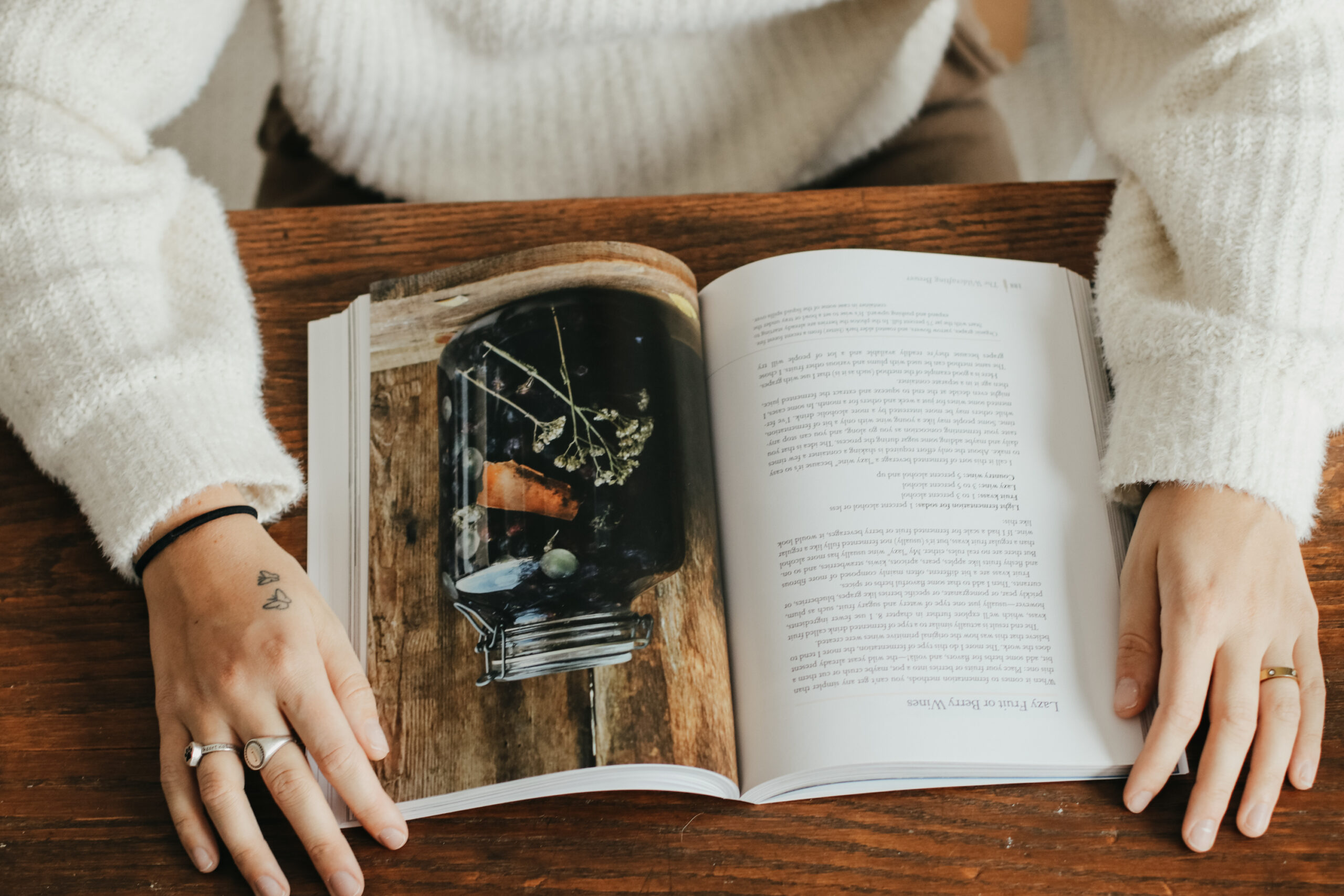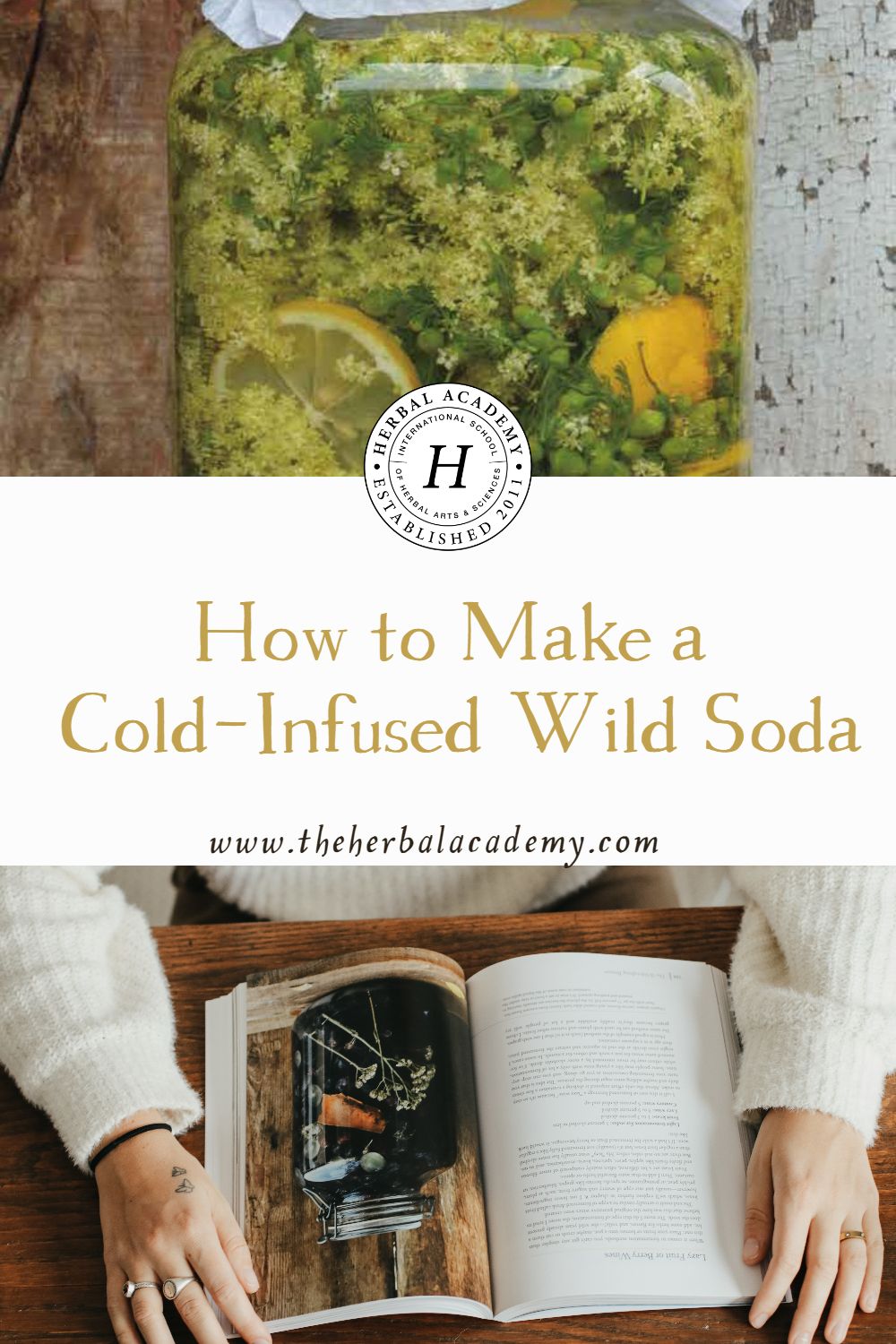
How to Make a Cold-Infused Wild Soda
The following excerpt and wild soda recipes are from Pascal Baudar’s book The Wildcrafter Brewer (Chelsea Green Publishing, Feb. 2018) and is reprinted with permission from the publisher.

This method is fantastic for making quick sodas out of your favorite hiking place or to study the flavors of whole environments. Unlike most beers, you really don’t need to boil most of your ingredients with “wild” sodas. The fermentation is rather quick—I usually ferment my cold-infused sodas for 24 to 48 hours at the most. During that time, the yeast that you added to the brew will take over and, for now, be the obvious winner in this war against unwanted bacteria. Over time, this could possibly change, but because you’ll drink the soda pretty soon after the initial fermentation, the potential spoilage won’t happen. Enjoy the taste of victory!
As I explained in “Making Soda: The Boiling Method” (page 243), I choose whether or not to boil my ingredients based largely on flavor. Some herbs, such as mugwort and yarrow, unleash their flavors through boiling, but other herbs or plants including pines, fir, grass, fennel, and mints are much better when enjoyed fresh. If you boil mint, the flavor changes considerably. I really like the taste of some fresh pine or white fir needles, but when boiled . . . not so much. It’s clearly a question of individual preferences, though. As you experiment with wild brews and sodas, you’ll figure out the appropriate methods. That’s part of the fun. Aside from flavors, some sodas are made for medicinal purposes. A pine needle and lemon soda, for instance, is packed with vitamin C. Often vitamins and nutrients are altered through the boiling process, however, making a cold infusion more appropriate.
How to Make Cold-Infused Wild Soda

- Decide on the ingredients you’ll use to create your soda—herbs, fruits, aromatics, juices, and anything else—and forage or purchase them.
- Clean them thoroughly, as well as any container and utensils you will be using. You can go to the extreme of placing your container in boiling water to pasteurize it, but I’ve never had any problem with just a thorough cleaning with hot water and regular dish soap.
- With clean hands, place your ingredients into the container.
- Add water (not tap water, which may contain chlorine) and a sugar source (white sugar, honey, brown sugar, molasses, birch or maple syrup, and so on).
- Mix everything so your sugar base is well diluted and then add the yeast. You can use either a yeast starter (1⁄2–3⁄4 cup per gallon, or 120–180 ml per 3.78 L) that you have made yourself from wild berries, or a commercial yeast strain. I often use champagne yeast purchased online or at the local brewing supply store. For 1 gallon (3.78 L), I use between 1 and 1 1⁄2 cups (200–300 g) sugar or honey (236–354 ml). You can experiment with less, or add more if you want a very sweet soda. Most soda recipes call for 11⁄2 to 2 cups (300–400 g) of sugar per gallon, so I tend to be on the low-sugar side.
- Place a paper towel on top and secure it. If you used a jar, simply screw the metal band over the paper towel. Stir three or four times daily with a clean wooden spoon or other instrument.
- Wait around 24 hours (or up to a couple of days if you used a wild yeast starter); at this point the fermentation bubbling should be quite obvious.
- Taste! If you like it, you can strain the fermenting solution into recycled plastic soda bottles or swing-top bottles, then wait a day and check the pressure. If it’s appropriate, you can put your soda in the fridge

Elderflower-Pineapple Weed Soda
This soda is simple to put together and a good representation of my local terroir during late spring. During that time of the year, two of the most abundant and flavorful wild edibles are pineapple weed and elderflowers. Pineapple weed is a type of wild chamomile found across North America; the flowers actually look and taste like pineapple. They’re wonderful for making infusions or fermented concoctions. I even use them in some of my primitive beers. You really can’t go wrong with the flavor combination of elderflower, lemon, and pineapple. It makes a delicious fruity and floral soda.
Elderflower-Pineapple Weed Soda
2 cups (500 ml) pineapple weed flowers
4–6 cups (1–11⁄2 L) elderflowers
3 lemons
1 gallon (3.78 L) springwater
1 1⁄2 cups (335 g) organic cane sugar or honey
3⁄4 cup (180 ml) wild yeast starter (or champagne yeast)
- I fill half of my (clean) container loosely with the flowers and lemons, add the springwater and sugar, then add the yeast and set a paper towel on top secured by a rubber band.
- For this soda, I use a wild yeast starter, but it’s not always necessary—the elderflowers have wild yeast as well.
- Using a clean wooden spoon, I stir the liquid three or four times a day until I get a nice fermentation— usually 2 to 3 days in Southern California. I don’t leave my ingredients in the fermenting water more than 3 days, as I think this adversely affects the flavors.
- My next step is to strain the liquid (see the notes) into another container and ferment it a bit longer. But you can also stop the fermentation right away if you’re happy with the flavors. Regardless, after fermentation pour the liquid into recycled soda bottles and check the pressure after a day or so.
- Put the soda in the fridge for at least 8 hours before serving. I usually drink it within a week or so.
Notes: Elderflowers contain a lot of small bugs. I usually leave my elderflowers outside in a bowl for a few hours; most of the bugs will vacate during that time. But the reality is, you’ll need to filter that soda when you bottle it unless you like the extra bug protein. Do not place your elderflowers in water beforehand to “clean” them. A lot of the flavors and wild yeast are in the pollen. As with many other soda recipes, you can make a boozier drink by using more sugar and fermenting longer.
Get a copy of Pascal Bauder’s book, The Wildcrafted Brewer, via Chelsea Green Publishing here or on Amazon.


About the Author:
Pascal Baudar is the author of three other books: Wildcrafted Vinegars (2022), Wildcrafted Fermentation (2020), and The New Wildcrafted Cuisine (2016). A self-described “culinary alchemist” he leads classes in traditional food preservation techniques. Through his business, Urban Outdoor Skills, he has introduced thousands of home cooks, celebrity chefs, and foodies to the flavors offered by their wild landscapes. In 2014, Baudar was named one of the most influential local tastemakers by Los Angeles Magazine.








